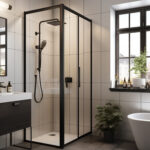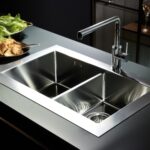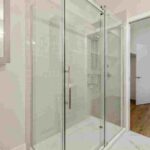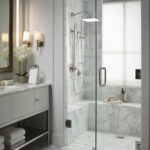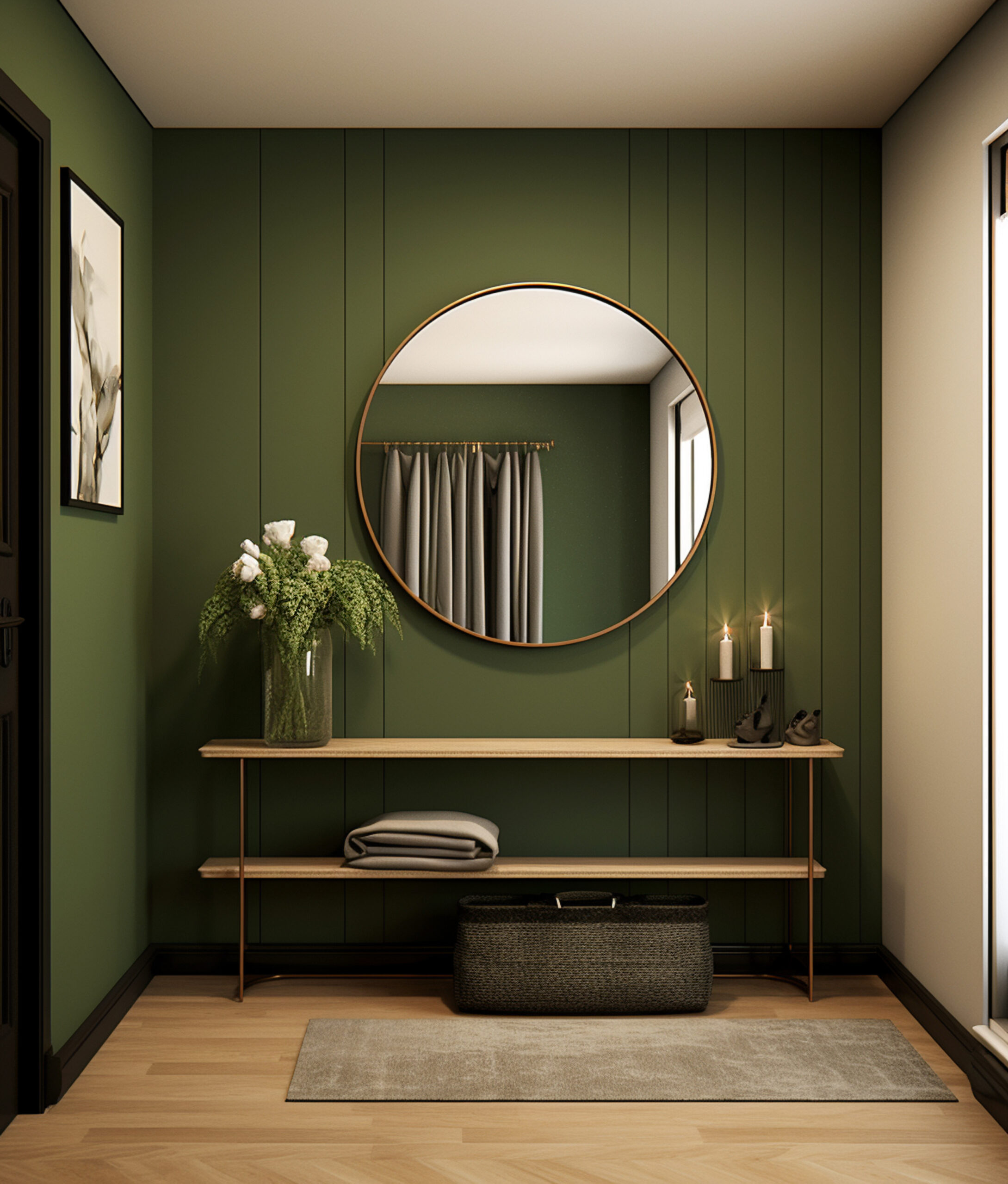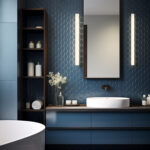MDF
- Engineered wood composite similar to particle board, but denser and stronger
- Compressed using tiny bits of wood, for a long time and at high temperatures
The benefits of MDF include price as well as the smooth surface. You won’t find knots or splinters around edges, which means it takes paint extremely well. There are, however, drawbacks to using MDF. If left unfinished and it gets wet, it will swell and disintegrate. Also, there’s a chance it could release formaldehyde; a known carcinogen. Painting the MDF, however, will seal it thus preventing any off-gassing. So, if you’re looking for a painted vanity, this could be the way to go.

Plywood Materials
Plywood is made from veneers of wood glued into layers that form sheets. Like particle board, this product comes in a variety of thicknesses and qualities. On the low-end, soft woods, quick dry glues, and voids can be often found between the layers. This plywood is usually coated with a plastic that has a wood grain pattern applied because the wood they use isn’t very attractive and may not finish well. On the high end however, it is a very attractive wood and a truly solid choice (no pun intended) for your bathroom vanity.
It will rarely degrade. While you want to be cautious of water damage with all types of woods, high end plywood has a pretty high success rate in terms of holding up for a long period of time. Some people question a vanity that has plywood on the sides or back and wonder if solid wood would be a better choice. In reality, it’s not. The plywood will be more stable over the long run than solid wood. That is because the plywood will not expand or contract to moisture/humidity/temperature changes like solid wood does. If covered in veneer, it will be as stable as solid wood and will not chip/peel except under unusual circumstances. Plywood is an excellent choice for bathroom vanity materials.

Solid Wood
Just as it sounds, a solid wood vanity will last longer and withstand more harsh conditions of the bathroom. However, because it is a wood, it can expand and contract with extreme moistures. Furthermore, wood also has its own natural imperfections, such as knots, discolorations, and veining. These effects are neither positive nor negative. Rather, it boils down to your personal preference. What’s more, solid wood vanities are generally a little bit expensive. Expensive Luxury Beauty is its name.
Durability:
Solid hardwood is the most durable wood material and is made from woods like oak, cherry and maple. Solid wood has the tendency to shrink and expand as humidity changes. Expansion can cause cracks in the painted finish and also warping (in extreme cases).
Benefits:
Real wood is porous in nature so it will absorb water molecules in the air. However, I won’t dare say that real wood is a bad material. It’s been used for centuries and is still the preferred option by many contractors and builders. The strength and durability of solid wood is why many choose to go with wood bath vanities, so it really depends on what you find most important. By keeping humidity in control, most homeowners won’t have any problems with this beautiful material. It works best with a natural or stained finish, as opposed to paint.

So which one is better for your Bathroom?
Cost side
MDF wins in terms of cost hands down. MDF bathroom cabinets can be ideal if you’re remodelling the bathroom on a budget. . Solid wood or solid hardwood vanities cost more but are usually stronger and available in more details designs such as hand carvings seen in antique, country, and transitional bathroom cabinets. Of course, as with many things, you get what you pay for, and we would not recommend MDF cabinets if you intend to install a vanity that will last a long time. If you have the budget for it, we suggest opting for a solid hardwood vanity.
Why Your Vanity Needs to Be Built Out of Quality Materials?
Moisture and humidity can wreak havoc on a low-quality vanity made from particle board. These conditions can cause your vanity to crack, warp, and discolor over time.
Vanities must be strong enough to support the weight of a heavy countertop. Poor materials will lead to sagging and drooping in the center of your vanity where the countertop and basin are the heaviest. Over time, sagging will worsen. In most cases it won’t collapse completely but it will lead to cracks. The seal between your vanity and it’s top will likely break as well.
If you need professionals to handle with your vanities, find orton.
Visit:https://ortonbaths.com/is-a-one-piece-toilet-worth-considering/
Visit:https://ortonbaths.com/what-constitutes-a-two-piece-toilet/



